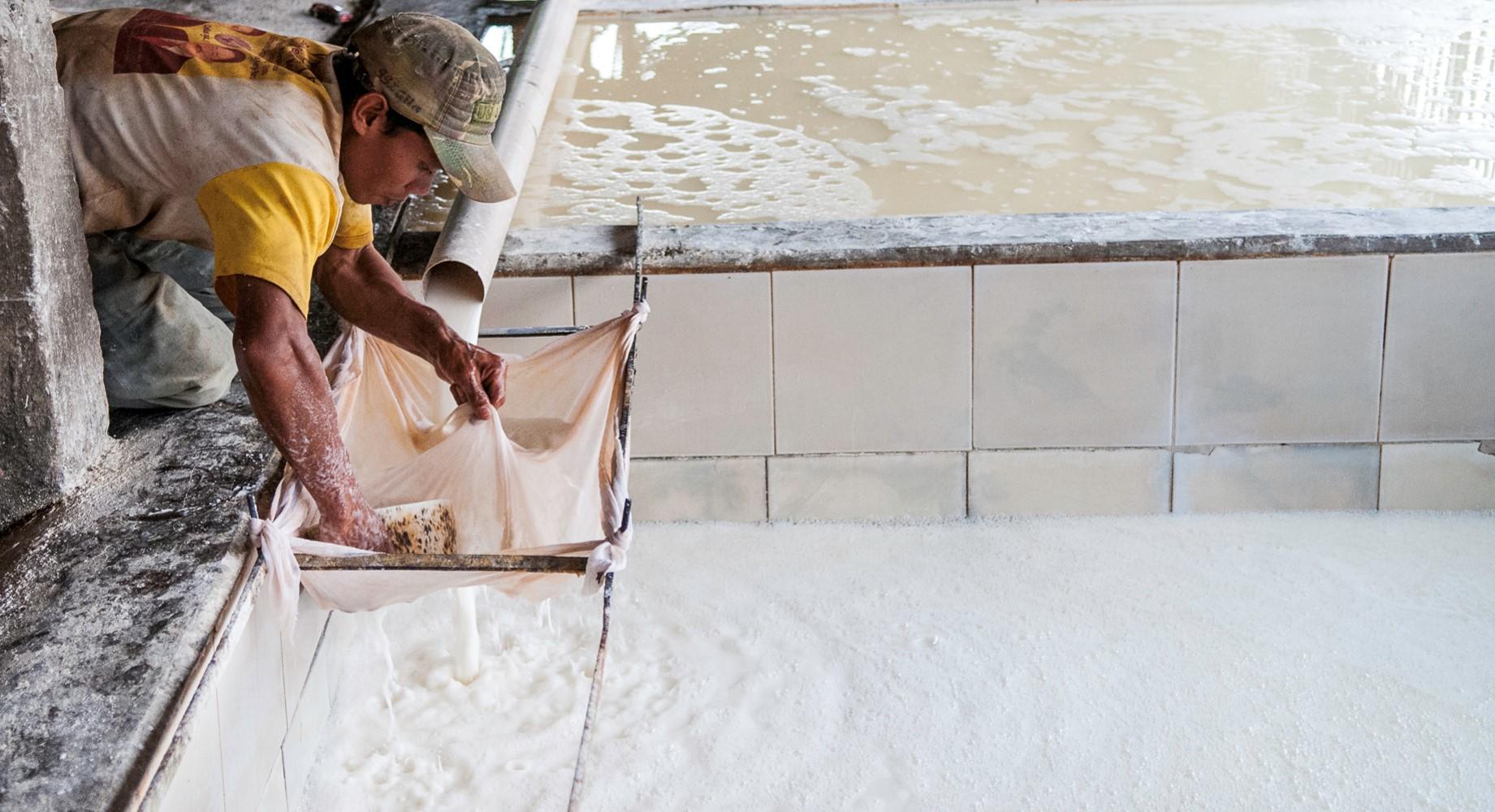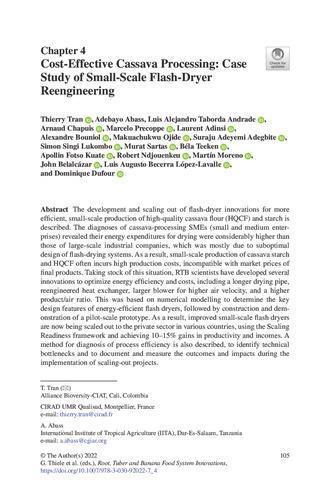Cassava Flour investment project feasibility web tool

This tool could be used as a rough estimate to a pre-feasibility study of investment in cassava flour processing using flash drying technology. It uses predetermined information based on averages of business plans of multiple cassava flour processors from D.R. Congo, Nigeria, and Colombia. The information was collected during 2019 and 2020 under the RTB Scaling Readiness Flash Dryer project.
Cassava is a starchy root crop that is a major staple food for people in developing countries. It is grown in tropical regions of the world because of its ability to withstand difficult growing conditions. The most common practice is sun-drying cassava roots to make flour, which is challenging during the extended rainy seasons in the tropics and affects the overall quality of the starch. As a result, farmers and small-scale processors face difficulties to offer their produce to industries that need regular, all-year-round supply and consistent quality for flour and starch production.
Flash drying, compared to sun drying, enables substantial gains in product quality and productivity by reducing the drying time from between 10 and 48 hours to a few seconds and providing constant drying conditions. Flash dryers are used mostly by large-scale processors (production capacity of >50 tons of starch/day) in countries such as Brazil and Thailand, which have highly developed commercial starch production. Small-scale flash dryers (production capacity of between 1–3 tons of flour/day) are not widely used due to a combination of factors including high energy consumption and production costs. Since 2013, more reliable methods to design energy-efficient flash dryers, based on numerical modelling, have been developed and successfully tested in small-scale pilot flash dryers that have proven to achieve the same energy efficiency as large-scale industrial flash dryers.
In what context is this tool useful?
This tool is useful in a context where smallholder cassava farmers and small-scale cassava processors need to apply cost-effective drying solutions such as flash drying and estimate the pre-feasibility of investment in cassava flour processing using flash drying technology.
The three countries (Colombia, D.R. Congo, Nigeria) that provided information to develop the tool represent three levels of investment costs (respectively high, intermediate and low), due to different costs of materials (e.g. steel, motors, etc.) and labor costs. Investment conditions in other countries may vary, nevertheless the tool can be adapted to these other contexts by selecting the level of investment costs (high, intermediate, or low) that best reflects the situation in the country under study.
Results
The Scaling Fund Cassava Flash Drying project focusses on three countries where the scaling of small-scale flash dryers has potential: Colombia, DR Congo, and Nigeria. In Nigeria, between 2006 and 2016, prior to the Scaling Fund project, 157 cassava processors had invested in first-generation small-scale flash dryers to produce cassava flour. However, 50% of these are not in use anymore because of the low energy efficiency and subsequent high costs of operation. In the DR Congo, the long rainy season (1300–1900 mm/year) led to strong demands for cost-effective drying solutions such as flash drying. In Colombia, labor-intensive sun drying is costly, motivating cassava processors to seek other drying solutions to increase their production capacity and reduce costs. In each of these countries, partners who were willing to co-invest were identified and brought on board. An initial scaling strategy was proposed in 2019 to train scaling partners (equipment manufacturers and cassava processors) on theoretical and practical aspects of building and operating energy-efficient small-scale flash dryers. In addition, the Scaling Fund project would provide technical support to enable scaling partners to upgrade their existing flash dryers or to invest in new ones. During the project, the Scaling Readiness approach was used to identify bottlenecks and adjust the scaling strategy.
The use of this tool to analyze the profitability of investment in flash drying technology was part of a successful workshop held in 2021, with 80 participants from Nigeria, DR Congo, Cameroon, Côte d'Ivoire, Benin, Togo, Sierra Leone, Uganda, Tanzania, Malawi, Zambia, Colombia, and Vietnam.
Tools often used together with this tool?
Contact people
Thierry Tran - [email protected])
Alejandro Taborda - [email protected]


